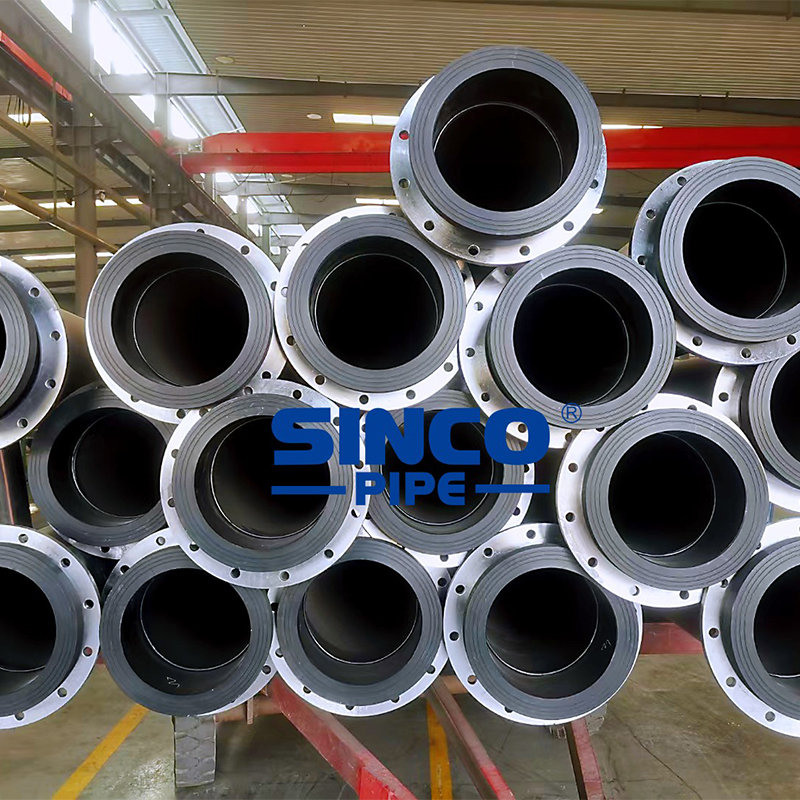What are the different types of dredging pipes?
Dredging pipes play a crucial role in hydraulic dredging operations, facilitating the transport of sediment, slurry, or debris from underwater locations. These pipes are designed to withstand the demanding conditions encountered during dredging activities. In this article, we will explore the different types of dredging pipes available, understanding their characteristics, applications, and considerations to help choose the right pipe for efficient and effective dredging operations.
HDPE Pipes (High-Density Polyethylene): HDPE pipes are commonly used in dredging operations due to their excellent durability and resistance to abrasion, corrosion, and UV degradation. These pipes are lightweight, flexible, and offer high tensile strength, making them easy to transport and install. HDPE dredging pipes also have smooth interiors, reducing friction losses and ensuring efficient flow of dredged material. They are suitable for both marine and land-based dredging projects.
Rubber Hose Pipes: Rubber hose pipes are highly flexible and ideal for transporting abrasive materials during dredging operations. They are constructed with a reinforced rubber layer to withstand high pressures and heavy-duty applications. Rubber hose pipes offer excellent resistance to wear, impact, and chemicals. They are commonly used for suction and discharge applications, connecting dredgers to floating or submerged pipelines.
Steel Pipes: Steel pipes are known for their exceptional strength and durability, making them suitable for demanding dredging projects. They are resistant to external forces, including impact and abrasion, and can withstand high pressures. Steel pipes are commonly used for long-distance dredging applications, where stability and strength are crucial. They are available in various thicknesses and diameters to accommodate different flow rates and sediment sizes.

Polyethylene Pipes: Polyethylene pipes are lightweight and flexible, making them suitable for portable or temporary dredging operations. They offer good resistance to corrosion, chemicals, and abrasion. Polyethylene pipes are easy to handle and install, allowing for quick setup and dismantling. They are commonly used in small-scale dredging projects, such as pond or lake maintenance, where maneuverability and ease of deployment are important.
Floating Pipes: Floating pipes are designed to be buoyant, allowing them to float on the water's surface during dredging operations. These pipes are typically made of materials such as HDPE, rubber, or steel, combined with floats or foam-filled sections to provide buoyancy. Floating pipes are used to transport dredged materials over long distances without the need for additional support structures. They are particularly useful in deepwater or offshore dredging projects.
Considerations for Selection: When choosing a dredging pipe, several factors should be considered:
See also:Sae R9: Unveiling the Secrets Behind the Ultimate Engineering Standard
How to Choose Dredge Hoses? A Comprehensive Guide for Buyers
Revolutionizing Safety Standards: What Does DIN EN 856 Mean For Industry?
How to Choose the Best Custom Hydraulic Fittings
10 Questions You Should Know about What Are Hydraulic Hoses Made Of
Is SAE 100 R13 the Future of Hydraulic Hoses?
How Does SEO Work?
a. Operating Conditions: Consider the water depth, sediment type, flow rates, and pressure requirements of the dredging project. Select a pipe that can withstand the specific operating conditions encountered during dredging operations.
b. Material Compatibility: Ensure the selected pipe material is compatible with the dredged material, including sediment composition and potential chemical exposure.
c. Size and Diameter: Determine the appropriate pipe size and diameter based on the required flow rates and sediment size.
d. Flexibility and Maneuverability: Consider the flexibility and maneuverability requirements of the dredging project, especially for applications involving bends or confined spaces.
e. Cost and Lifecycle: Evaluate the cost-effectiveness and expected lifecycle of the dredging pipe, factoring in installation, maintenance, and replacement considerations.
Conclusion:
Choosing the right type of dredging pipe is essential for efficient and effective dredging operations. HDPE pipes, rubber hose pipes, steel pipes, polyethylene pipes, and floating pipes each offer unique characteristics and advantages. Consider the specific project requirements, including operating conditions, material compatibility, size, flexibility, and cost, when selecting a dredging pipe. By selecting the appropriate pipe type, dredging professionals can ensure reliable and efficient sediment transport, enhancing the overall success of dredging projects in various marine, coastal, and inland applications.
How Many AC Lines Are in a Car?
The Pros and Cons of Different Types of Plumbing Pipes
Get Wholesale 500mm floater For Sea and River Fishing
How to Choose How Many AC Lines Are in a Car
Vacuum cleaner buying guide
Buying a Used Gold Dredge - August 2005 (Vol. 74, No. 12)
Discover the Benefits of SAE100R9 Hydraulic Hose for Your Equipment

